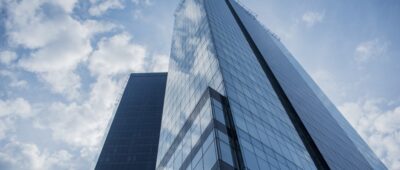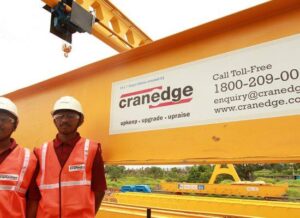Why should asset tracking be the first priority for your facilities management?

Technological innovations are getting more sophisticated by the day. In times where buildings and campuses are embracing technology and becoming ‘smart’, the effective operations and management of these facilities have become increasingly important too. In fact, it has become vital for organizations to capitalize on new technologies in the area of facilities management.
For long the workplace has being seen as a critical enabler of business efficiencies. Of course, this is not just because of the premises itself but also because of the tools, facilities, and enabling features it provides to help employees deliver their duties. The scope of facilities management is not restricted to the physical property of a facility. The practice of facility management can be said to cover:
- Soft Services which include housekeeping, office services, pest control, guest relations, etc.
- Hard Services which include mechanical & electrical works, plumbing works, energy management, IT & support, etc.
- Safety & security – ensuring the safety of the facility and people during an emergency
- Direction and control – strategic directions to drive cost-effective policies for greater energy efficiency, better cost control, optimal resource utilization, and sustained operational impact.
Even in a world changed forever by COVID and learning to embrace a more flexible way of working, the assets contained within the facility hold tremendous importance in enabling workers -both on-premise and remote.
The continuing effectiveness of a facility is, obviously, mainly dependent upon the availability and utility of the assets of the company like:
- Machine & hardware – computers, copiers, printers, IT equipment
- Employee’s assets – mobile phones, badges, safety equipment, uniforms, vehicles & keys
- Physical assets – floors, paint, desks, workstations, recreational room appliances, lighting, signages, etc.
Why is Asset Tracking Important?
A company invests a considerable amount of funds in acquiring assets, both tangible and intangible. Facilities management focuses on the physical assets of a facility. In that context, the main task of a facilities manager is to assure efficient operations of a facility through optimum utilization of the resources and assets.
Clearly, asset tracking would play a critical role in ensuring the success of the facilities management function and here’s how:
1. Better Planning
Managing assets play a crucial role in facilities management. It is the facilities manager’s responsibility to ensure that all the necessary physical assets are available when they need to be utilized. You must first know the available assets to be able to plan for addressing any potential shortfalls. Tracking the physical assets owned by the organization helps the facilities manager in making and executing effective provisioning plans to run the facility without any hiccups.
2. Optimum Utilization of Resources
A resource is only as useful as its utilization. Tracking physical assets lets the facilities manager make an efficient plan to utilize the available resources to their optimal level. It’s important to provision just as much of a resource as is needed. Too little could hurt ops and too much, the budget. Hence it is essential to ensure that no resource is under-employed in the organization. It is also important to ensure that the required resources are provided for. Tracking asset utilization will help in high productivity and will also help in curtailing operating costs and maximizing profits.
3. Efficient Allocation of Funds
Often, facilities manager could end up spending more than required on procuring more assets due to the unavailability of the data on owned and available assets. One of the prime goals of asset tracking in facilities management is to improve the return on capital for the company. A facilities manager with a clear picture of the owned assets can help in devising a sound budget for utilization of funds strictly driven by the ground reality. In addition, in the new world, unused assets can also become a source of revenue for the company. Based on a clear picture of resource availability and projected needs, these resources can be opportunistically hired out for limited periods of time. An interesting way for Facilities Management to add to the company’s top line!
4. Effective Decision Making
One of the major tasks of the facilities management is to provide a sound operational structure that stands up to a variety of challenging situations. Decision making plays a vital role in creating such an operational structure. Decision making is the foundation of a good plan, and a good plan is dependent upon the availability of accurate information. Asset tracking helps in collecting data on the physical assets, which helps in making better-informed long-term decisions for the smooth operation of the facility.
5. Operation and Maintenance
The most useful and longest period of an asset’s life is its operational phase. In this phase, the asset is used to provide services to support the core operating systems of the organization. The longevity of an asset can be ensured with a well-thought maintenance plan. The maintenance plan can be either preventive or reactive/corrective. This is also key to cost-control. Preventive maintenance saves time and takes less effort. Asset tracking lets the facilities manager gauge the condition of the asset on an ongoing basis to define meaningful maintenance strategies. Thus, a comprehensive asset tracking strategy helps in optimizing the operational performance of an organization by minimizing whole life operational costs.
The scope of asset tracking is not limited to ensuring the smooth functioning of the facility and the extended community of remote workers. It also contributes to the future planning of the organization by allowing data-driven planning and forecasting. An organization with a strong asset tracking strategy is bound to see significant improvements in financial and operational performance.
Technology plays an even more crucial role in how organizations operate today. In the fast-paced technology-driven world of today’s flexible workplaces, it is vital to know what assets are owned and how they are being utilized. Failing to do so will make the organization inefficient and hurt its ability to compete.







